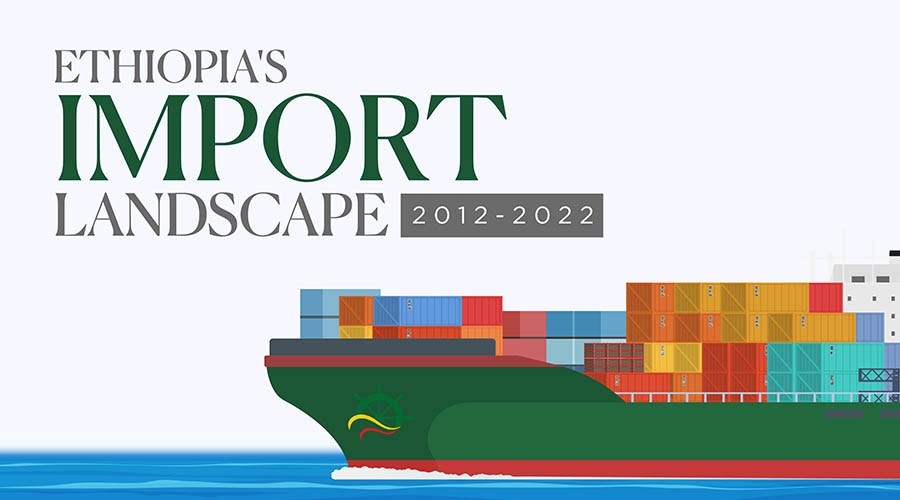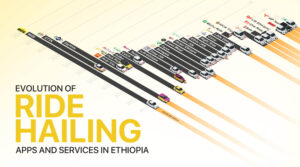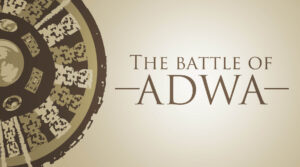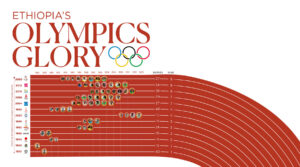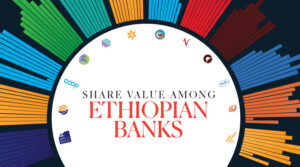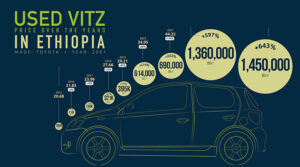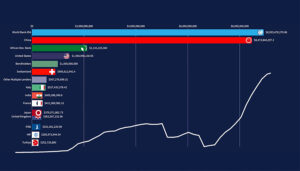Broad Strokes
Strolling through a supermarket aisle or browsing a souq‘s offerings quickly reveals the significant role of imported goods in everyday life in Ethiopia. From basic necessities to specialized equipment, these imports are not just conveniences but are integral to shaping Ethiopians’ lifestyles and living standards. We see this further reflected in the substantial impact imports have on the country’s overarching economic fabric.

Take, for example, the importation of machinery and vehicles, which are vital to Ethiopia’s industrial operations—a key focus of government efforts—and essential for transportation nationwide. The steady flow of these imports fuels expanding construction projects and the integration of advanced technology into our daily lives. It’s not just that— the variety of new electronic devices and vehicles not only modernizes our routines and likely supports environmental causes, but it also aligns Ethiopia with global technological trends.
From basic necessities to specialized equipment, imports are not just conveniences but integral to shaping Ethiopians’ lifestyles and living standards.
Let’s hone down for a moment on Ethiopia’s heavy reliance on the importation of essential commodities such as cooking oil, cereals, and pharmaceutical products that cater to basic needs. The sheer volume of these imports has a cascading effect on the pricing of goods in local markets. For instance, an increase in the cost of imported cereals could potentially escalate the prices of derivative products like bread and pasta. This helps us understand the country’s micro and macro dependency on importing. Despite the desire for self-sufficiency, the reality is that current local production requires reliance on imports to meet demands, and this is true for more sectors than not.
The variety of new electronic devices and vehicles not only modernizes our routines but also aligns Ethiopia with global technological trends.
In 2022, Ethiopia’s total imports reached USD 18 billion, driven by imports of machinery, mineral fuels, vehicles, and other commodities. Consumer goods— also known as final goods, are products that are purchased for personal use or pleasure and not for further economic activity, accounting for 42% of total import spending, totaling approximately USD 7.6 billion. Capital goods—tangible assets such as machinery and equipment used to produce consumer goods or services— made up 17% of total import spending, approximately USD 3 billion. Ethiopia’s substantial import expenditure on consumer goods suggests potential economic vulnerabilities such as inadequate infrastructure, technology, or investment in local sectors that produce consumer goods, limiting local production. As we will see the deeper we delve into this, such a pattern could limit economic resilience by making the country more susceptible to global market fluctuations and trade disruptions, as was the case with the Ukraine-Russia war or COVID-19.
The sheer volume of imports has a cascading effect on the pricing of goods in local markets, revealing the depth of Ethiopia’s dependency on importing.
Importing is unavoidable, and the key to economic health is maintaining the trade balance. Unfortunately, in this regard, Ethiopia has experienced a trade deficit for many years, with imports consistently surpassing exports. According to recent data, the country’s trade deficit increased from nearly USD 11 billion in 2021 to approximately USD 14 billion in 2022. This significant increase in the trade deficit is attributed to a rise in imports of various goods, including consumer products, fuel, and semifinished goods. A comprehensive understanding of our import portfolio and its underlying rationale provides valuable insights into the dynamics of our economy and its influence on our daily lives.
(See a breakdown of the most imported product categories in Ethiopia at the bottom of the article).
Ethiopia’s Import Trends: Insights and Implications for the Economy
Over the past decade, Ethiopia’s import trends, totaling approximately USD 168.5 billion, not only showcase the country’s transformative economic phase but also underscore the persistent challenges it faces in achieving structural transformation. With a collective USD 53.2 billion spent on the import of machinery, electrical equipment, and vehicles, these figures reflect Ethiopia’s strategic focus, as laid out in its first comprehensive Industrial Development Strategy (IDS) of 2003 and furthered through successive five-year plans such as GTP-I and GTP-II.
With a trade deficit that increased to approximately USD 14 billion in 2022, Ethiopia faces urgent economic challenges driven by an imbalance in import-export dynamics.
The imported commodities like heavy machinery, totaling USD 23.7 billion from key global players like China, the USA, and Europe, are vital for driving Ethiopia’s ambitious infrastructure projects. Additionally, the USD 15.2 billion allocated to electrical machinery and the USD 14.3 billion to vehicles— with a significant focus on vehicles for goods transport (40.32%)— all point to the modernization and industrialization of the country.
Driving Ethiopia’s ambitious infrastructure projects, imported heavy machinery from global players underscores the country’s strategic industrial needs.
Despite remarkable economic growth averaging 10.3% from 2003 to 2018, driven largely by public infrastructure investments, Ethiopia’s manufacturing sector remains underdeveloped, contributing just 6.8% to GDP in 2018/2019. This points to a critical dependency on imports for not just consumer goods but also essential industrial materials and technologies that the local market does not yet produce at scale. The high import rates for cereals, at USD 9.4 billion, and for pharmaceutical products, at USD 6.7 billion, further highlight the gaps in self-sufficiency in sectors critical for national well-being.
Non-renewable materials represent another major component of Ethiopia’s import bill. The import of mineral fuels, mineral oils, and their derivatives (USD 21.4 billion) indicates a heavy reliance on imported energy sources, with the majority coming from Kuwait and Saudi Arabia. This reliance on oil exposes the economy to fluctuations in global oil prices. If you’ve been curious why fuel prices are rising consistently in Ethiopia, resulting in long lines outside petrol stations around the country, it’s a combination of total dependency on the import of refined fuel, currency fluctuations, and government-regulated price capping.
The USD 8.4 billion import value for iron and steel, with 28.06% consisting of bars and rods, aligns with Ethiopia’s construction and industrial activities. It is worth considering that while the construction sector has seen significant growth as a direct or indirect result of these imports, its contribution to job creation remains limited, suggesting that the boom is more capital-intensive than labor-intensive.
Additionally, improving infrastructure and regulatory frameworks will attract more private investment, both domestic and foreign, further supporting local enterprises and reducing the trade imbalance.
The substantial imports of organic and chemical products highlight Ethiopia’s significant dependencies in key sectors. The country spends USD 9.4 billion on cereals, mainly wheat and meslin, indicating a significant reliance on imported food staples due to limited domestic agricultural capacity. This may explain the USD 5.9 billion spent on fertilizers, which is critical for enhancing agricultural output. The USD 7.6 billion import bill for animal or vegetable fats and oils, primarily palm oil, underscores a dependency on external sources for essential cooking ingredients, reflecting gaps in local production capabilities. Similarly, pharmaceutical imports totaling USD 6.7 billion, mainly for therapeutic and prophylactic uses, reveal a heavy reliance on foreign medical supplies.
These patterns underscore Ethiopia’s dependence on imports for essential goods and industrial materials, creating pressure on the economy and highlighting the need for strategic reforms. The high import rates for cereals, machinery, mineral fuels, and vehicles, coupled with a lack of corresponding export growth, contribute to a widening trade deficit and increased debt burdens. Addressing these challenges requires a balanced approach that fosters local production, stimulates exports, and promotes self-reliance.
The major pressure points can be summarised as follows:
- Vulnerability to Global Market Fluctuations: Ethiopia’s substantial reliance on capital and consumer goods ties the economy closely to global market dynamics. This dependence makes it susceptible to international economic shocks and price volatility, which can disrupt local markets and economic stability. Reducing import dependency is crucial for enhancing economic sovereignty and resilience.
- Inadequate Job Creation in Key Sectors: The reliance on imports in sectors like machinery and vehicles not only drains significant financial resources but also bypasses potential domestic job creation opportunities. Local industries should be encouraged and incentivized to substantially increase employment and support economic diversification.
- Compromised Food Security: The heavy importation of essential food items such as cereals and vegetable oils, as well as fertilizers, highlights a severe gap in Ethiopia’s agricultural self-sufficiency. Strengthening local agricultural production is essential to ensure food security, control food inflation, and reduce dependence on unpredictable global food markets.
- Drain on Foreign Exchange Reserves: High import costs further deplete Ethiopia’s limited foreign exchange reserves, exacerbating the depreciation of the Birr and heightening economic vulnerabilities. Managing the import bill more effectively and boosting exports can result in much-needed conservation of foreign currency reserves and enhance the country’s overall economic stability.
- Delayed Technological Advancement: Despite significant investments in imported technological goods and machinery, Ethiopia’s rate of technological adoption and innovation within local industries remains slow. Developing domestic capacities to produce these high-tech goods could catalyze technological advancement and build a more competitive and resilient economy.
- Environmental Impact: The importation of large quantities of vehicles and industrial machinery not only imposes financial burdens but also inflicts environmental harm, contributing to elevated emissions and increased resource consumption. Ethiopia’s existing infrastructure and capacity to manage emissions and waste from these imports are insufficient, compounding the ecological challenges. Prioritizing the development of eco-friendly industries and advancing green technologies domestically could mitigate these environmental impacts. Enhancing local capabilities in managing waste and emissions is crucial for creating sustainable economic growth and ensuring environmental resilience.
The Government’s Response to the Trade Imbalance and Debt Pressures
Faced with a growing trade deficit and increasing debt, Ethiopia has initiated significant reforms through the HGER I and the Ten-Year Development Plan. These efforts aim to stabilize the economy by boosting self-reliance and addressing the trade imbalance with a focused strategy on import substitution.
Ethiopia’s substantial import expenditure suggests potential economic vulnerabilities, limiting local production and economic resilience.
Key measures include promoting exports and reducing imports, supported by coordinated efforts from the Ministry of Trade, the National Bank of Ethiopia, and the Ministry of Industry. Notable initiatives under the Import Substitution Strategy include enhancing local production capabilities through incentives, revising procurement policies to favor domestic products, and increasing financial support for manufacturing. Additionally, Ethiopia is expanding its regional trade by joining the African Continental Free Trade Area (AfCFTA), aiming to enhance market access across Africa and strengthen economic resilience.
Path Forward for Ethiopia: Strategic Reforms and Economic Resilience
To effectively counteract the high import reliance and widening trade deficit, a comprehensive and collaborative approach is essential, involving the private sector, Ethiopian citizens, and targeted governmental initiatives. The private sector should be actively encouraged to increase the production of in-demand commodities, thereby reducing the gaps created by lowered imports and propelling economic growth. Simultaneously, creating a preference among citizens for locally-made products can stimulate local businesses, creating a supportive cycle of investment and production that bolsters the domestic economy.
To alleviate the many issues that are a direct and indirect result of the country’s high import dependency, Ethiopia must consider a multifaceted approach. One of these includes encouraging the development of local industries to reduce dependency on foreign goods, boost economic resilience, and create jobs. Strategic investments in sectors like agriculture, manufacturing, and technology will enhance local production capacities. Additionally, improving infrastructure and regulatory frameworks will attract more private investment, both domestic and foreign, further supporting local enterprises and reducing the trade imbalance. The path forward must promote economic stability and have a tunnel vision toward a more self-reliant and robust Ethiopian economy.
Annex
Top 11 Imported Commodity groups (2012 – 2022)
| Category | Subcategory | Import Value (2012–2022) | Origin | Additional Subgroup Information |
| Machinery and Vehicles | Nuclear reactors, boilers, and mechanical appliances (84) | USD23.7 billion | China, USA, Italy, United Kingdom, India, Germany | Most imported subgroup: “Bulldozers, graders, mechanical shovels, etc. (8429)” with “Mechanical shovels, excavators, and shovel loaders (842959)” accounting for 42.87% of the subgroup. |
| Electrical machinery and equipment (85) | USD15.2 billion | China, Sweden, India, USA, Italy | Major subgroup: “Telephone sets for cellular networks, wireless networks, etc. (8517)” with 23.93% of the imports. Other significant subgroups: “Electric transformers (8504)” and “Insulated wire, cable, etc. (8544).” | |
| Vehicles; other than railway or tramway rolling stock, parts and accessories (87) | USD14.3 billion | Japan, China, India, Italy, Spain | Two prominent subgroups: “Vehicles for the transport of goods (8704)” with a 40.32% share, and “Motor cars and other motor vehicles for transport of persons (8703)” with a 30.36% share. | |
| Non-renewable Materials | Mineral fuels, mineral oils, and products of their distillation; bituminous substances; mineral waxes (27) | USD21.4 billion | Kuwait, Saudi Arabia, UAE, South Africa, Bahrain | Major subgroup: “Petroleum oils and oils from bituminous minerals, not crude (271019)” with 91.06% of import share. |
| Plastics and articles thereof (39) | USD6.5 billion | China, Saudi Arabia, UAE, India, Rep. of Korea | Key subgroups: “Polymers of ethylene in primary forms (3901)”, “Polymers of propylene or other olefins in primary forms (3902)”, and “Polyacetals and other polyesters (3907)” with significant import shares. | |
| Iron and steel (72) | USD8.4 billion | China, Türkiye, India, Ukraine, Other Asian countries | Most imported subgroup: “Iron or non-alloy steel; bars and rods (7214)” with 28.06% of the share. Other subgroups include: “Flat-rolled products (7210, 7207, 7209, 7208)” with varying shares. | |
| Organic and Chemical Products | Cereals (10) | USD9.4 billion | India, USA, Ukraine, Romania, Russian Federation | Two major subgroups: “Wheat and meslin (1001)” with 60.61% of imports, and “Rice (1006)” with 20.01% of imports. Wheat and meslin imports have fluctuated, with notable peaks in 2016. |
| Animal or vegetable fats and oils (15) | USD7.6 billion | Malaysia, Indonesia, Türkiye, Djibouti, USA | Dominant subgroup: “Palm oil and its fractions (1511)” with 71.58% of import share. Significant subgroup: “Sunflower seed, safflower or cotton-seed oil (1512)” with a 21.19% share. | |
| Pharmaceutical products (30) | USD6.7 billion | India, Netherlands, Belgium, USA, China | Leading subgroup: “Medicaments for therapeutic or prophylactic use (3004)” with 72.75% share. Another notable subgroup: “Human blood, antisera, and other immunological products (3002)” holding 22.01% of the imports. | |
| Fertilizers (31) | USD5.9 billion | Morocco, Egypt, China, Saudi Arabia, Russian Federation | Two major subgroups: “Fertilizers containing nitrogen, phosphorus, potassium (3105)” with 63.62% share, and “Fertilizers; nitrogenous (3102)” with 35.95% share. The primary product in this second subgroup is urea (310210), with 93.77% share. |
| Category | Sector | Import Amount (2012-2022) |
|---|---|---|
| 1 | Animal and Animal Products | $271,874,736 |
| Animals; live | $86,755,328 | |
| Meat and edible meat offal | $6,582,502 | |
| Fish and crustaceans, molluscs and other aquatic invertebrates | $9,164,968 | |
| Dairy produce; birds’ eggs; natural honey; edible products of animal origin, not elsewhere specified or included | $166,879,070 | |
| Animal originated products; not elsewhere specified or included | $2,492,867 | |
| 2 | Vegetable Products | $19,130,355,239 |
| Trees and other plants, live; bulbs, roots and the like; cut flowers and ornamental foliage | $47,240,554 | |
| Vegetables and certain roots and tubers; edible | $915,054,028 | |
| Fruit and nuts, edible; peel of citrus fruit or melons | $99,559,072 | |
| Coffee, tea, mate and spices | $57,148,111 | |
| Cereals | $9,384,993,980 | |
| Products of the milling industry; malt, starches, inulin, wheat gluten | $810,959,960 | |
| Oil seeds and oleaginous fruits; miscellaneous grains, seeds and fruit, industrial or medicinal plants; straw and fodder | $121,554,973 | |
| Lac; gums, resins and other vegetable saps and extracts | $78,641,201 | |
| Vegetable plaiting materials; vegetable products not elsewhere specified or included | $307,381 | |
| Animal or vegetable fats and oils and their cleavage products; prepared animal fats; animal or vegetable waxes | $7,614,895,979 | |
| 3 | Foodstuffs | $5,955,290,443 |
| Meat, fish or crustaceans, molluscs or other aquatic invertebrates; preparations thereof | $44,350,320 | |
| Sugars and sugar confectionery | $3,322,303,387 | |
| Cocoa and cocoa preparations | $46,780,905 | |
| Preparations of cereals, flour, starch or milk; pastrycooks’ products | $1,082,994,206 | |
| Preparations of vegetables, fruit, nuts or other parts of plants | $263,446,038 | |
| Miscellaneous edible preparations | $746,213,949 | |
| Beverages, spirits and vinegar | $254,199,231 | |
| Food industries, residues and wastes thereof; prepared animal fodder | $45,633,223 | |
| Tobacco and manufactured tobacco substitutes | $149,369,185 | |
| 4 | Mineral Products | $21,563,270,717 |
| Salt; sulphur; earths, stone; plastering materials, lime and cement | $155,988,251 | |
| Ores, slag and ash | $5,055,574 | |
| Mineral fuels, mineral oils and products of their distillation; bituminous substances; mineral waxes | $21,402,226,892 | |
| 5 | Chemicals and Allied Industries | $19,777,493,310 |
| Inorganic chemicals; organic and inorganic compounds of precious metals; of rare earth metals, of radio-active elements and of isotopes | $595,720,799 | |
| Organic chemicals | $1,059,998,494 | |
| Pharmaceutical products | $6,670,768,386 | |
| Fertilizers | $5,903,315,246 | |
| Tanning or dyeing extracts; tannins and their derivatives; dyes, pigments and other colouring matter; paints, varnishes; putty, other mastics; inks | $717,869,776 | |
| Essential oils and resinoids; perfumery, cosmetic or toilet preparations | $845,840,540 | |
| Soap, organic surface-active agents; washing, lubricating, polishing or scouring preparations; artificial or prepared waxes, candles and similar articles, modelling pastes, ‘dental waxes’ and dental preparations with a basis of plaster | $988,595,660 | |
| Albuminoidal substances; modified starches; glues; enzymes | $233,258,653 | |
| Explosives; pyrotechnic prod; matches; pyrop alloy; etc | $172,939,145 | |
| Photographic or cinematographic goods | $62,861,348 | |
| Chemical products n.e.s. | $2,526,325,262 | |
| 6 | Plastics/Rubbers | $9,091,152,311 |
| Plastics and articles thereof | $6,469,586,653 | |
| Rubber and articles thereof | $2,621,565,657 | |
| 7 | Raw Hides, Skins, Leather, & Furs | $287,422,661 |
| Raw hides and skins (other than furskins) and leather | $98,037,344 | |
| Articles of leather; saddlery and harness; travel goods, handbags and similar containers; articles of animal gut (other than silk-worm gut) | $187,125,912 | |
| Furskins and artificial fur; manufactures thereof | $2,259,405 | |
| 8 | Wood and Wood Products | $2,869,022,400 |
| Wood and articles of wood; wood charcoal | $786,666,263 | |
| Cork and articles of cork. | $3,585,844 | |
| Manufactures of straw, esparto or other plaiting materials; basketware and wickerwork | $3,217,819 | |
| Pulp of wood or other fibrous cellulosic material; recovered (waste and scrap) paper or paperboard | $86,713,942 | |
| Paper and paperboard; articles of paper pulp, of paper or paperboard | $1,556,098,398 | |
| Printed books, newspapers, pictures and other products of the printing industry; manuscripts, typescripts and plans | $432,740,133 | |
| 9 | Textiles | $6,875,450,010 |
| Silk | $1,960,158 | |
| Wool, fine or coarse animal hair; horsehair yarn and woven fabric | $42,376,443 | |
| Cotton | $229,958,159 | |
| Other vegetable textile fibres; paper yarn & woven fabric | $32,736,094 | |
| Man-made filaments | $1,825,966,174 | |
| Man-made staple fibres | $374,457,412 | |
| Wadding, felt and nonwovens, special yarns; twine, cordage, ropes and cables and articles thereof | $211,609,656 | |
| Carpets and other textile floor coverings | $90,007,696 | |
| Fabrics; special woven fabrics, tufted textile fabrics, lace, tapestries, trimmings, embroidery | $105,552,766 | |
| Textile fabrics; impregnated, coated, covered or laminated; textile articles of a kind suitable for industrial use | $118,181,923 | |
| Fabrics; knitted or crocheted | $212,349,561 | |
| Apparel and clothing accessories; knitted or crocheted | $843,339,380 | |
| Apparel and clothing accessories; not knitted or crocheted | $1,925,025,425 | |
| Textiles, made up articles; sets; worn clothing and worn textile articles; rags | $861,929,162 | |
| 10 | Footwear/Headgear | $1,169,554,732 |
| Footwear; gaiters and the like; parts of such articles | $1,022,620,069 | |
| Headgear and parts thereof | $57,909,648 | |
| Umbrellas, sun umbrellas, walking-sticks, seat sticks, whips, riding crops; and parts thereof | $65,580,152 | |
| Feathers and down, prepared; and articles made of feather or of down; artificial flowers; articles of human hair | $23,444,863 | |
| 11 | Stone/Glass | $1,969,832,728 |
| Stone, plaster, cement, asbestos, mica or similar materials; articles thereof | $508,150,209 | |
| Ceramic products | $701,056,198 | |
| Glass and glassware | $740,739,221 | |
| Natural, cultured pearls; precious, semi-precious stones; precious metals, metals clad with precious metal, and articles thereof; imitation jewellery; coin | $19,887,100 | |
| 12 | Metals | $18,016,277,065 |
| Iron and steel | $8,400,559,035 | |
| Iron or steel articles | $6,069,993,754 | |
| Copper and articles thereof | $579,427,656 | |
| Nickel and articles thereof | $4,811,517 | |
| Aluminium and articles thereof | $1,547,875,325 | |
| Lead and articles thereof | $11,915,909 | |
| Zinc and articles thereof | $279,674,634 | |
| Tin; articles thereof | $5,601,381 | |
| Metals; n.e.c., cermets and articles thereof | $3,116,509 | |
| Tools, implements, cutlery, spoons and forks, of base metal; parts thereof, of base metal | $507,262,625 | |
| Metal; miscellaneous products of base metal | $606,038,720 | |
| 13 | Machinery / Electrical | $38,855,245,824 |
| Nuclear reactors, boilers, machinery and mechanical appliances; parts thereof | $23,666,047,718 | |
| Electrical machinery and equipment and parts thereof; sound recorders and reproducers; television image and sound recorders and reproducers, parts and accessories of such articles | $15,189,198,106 | |
| 14 | Transportation | $17,602,040,615 |
| Railway, tramway locomotives, rolling-stock and parts thereof; railway or tramway track fixtures and fittings and parts thereof; mechanical (including electro-mechanical) traffic signalling equipment of all kinds | $685,042,814 | |
| Vehicles; other than railway or tramway rolling stock, and parts and accessories thereof | $14,347,105,087 | |
| Aircraft, spacecraft and parts thereof | $2,563,130,684 | |
| Ships, boats and floating structures | $6,762,030 | |
| 15 | Miscellaneous | $5,105,451,991 |
| Optical, photographic, cinematographic, measuring, checking, medical or surgical instruments and apparatus; parts and accessories | $2,592,211,969 | |
| Clocks and watches and parts thereof | $49,683,197 | |
| Musical instruments; parts and accessories of such articles | $16,924,076 | |
| Arms and ammunition; parts and accessories thereof | $3,699,654 | |
| Furniture; bedding, mattresses, mattress supports, cushions and similar stuffed furnishings; lamps and lighting fittings, n.e.s.; illuminated signs, illuminated name-plates and the like; prefabricated buildings | $1,843,325,831 | |
| Toys, games and sports requisites; parts and accessories thereof | $134,961,094 | |
| Miscellaneous manufactured articles | $460,402,140 | |
| Works of art; collectors’ pieces and antiques | $4,244,031 |

